About the Writer:
Taylor Britt
Taylor Britt is a recent Rice University graduate who works as Research and Special Projects Manager at Houston Wilderness, a local environmental nonprofit.
Taylor Britt
The promise of ecosystem services is that it can unite our understanding of ecology and earth science with the world of business and politics by allowing us to assess the true economic value of the natural world. But no matter how sophisticated the methods for calculating the monetary value of ecosystem services are, what really matters is the ability to reach the institutions and humans that will make the decisions to adopt ecosystem services.
Of course, money can be very visceral to people, but that doesn’t necessarily entail a full accounting of the externalities associated with protecting and restoring ecosystems. For instance, here in Houston, what the Texas Department of Transportation found especially compelling about urban freeway forestation wasn’t the air quality or aesthetic benefits (or what dollar value you put on that), but the fact that they would no longer need to mow the grass along the freeways. Many widely heralded green infrastructure successes (for instance, New York City’s protection of the Catskill-Delaware watershed) saved enormous amounts of money without even accounting for the value of the full societal benefit of ecosystem services.
What Houston still needs is more biophysical information the services provided by our region’s ecosystems. Local studies are especially important here because our politicians are often skeptical of information coming from other regions. Houston’s Harris County Flood Control District is currently looking at several possible solutions to flooding caused by Cypress Creek, which could have devastating impacts on the city if it overruns existing infrastructure. An expanded conservation area is on the table as part of the solution, but will depend on a study that is currently underway to demonstrate the effectiveness of native prairie grasses in absorbing water.
Local political realities inform the way solutions must be crafted in other ways as well. High private property ownership and suspicion of government regulation present challenges that require locally-tailored solutions. One especially exciting prospect here is the Lone Star Coastal Exchange, which is an ecosystem services marketplace under development that is targeted at philanthropic organizations and corporations seeking offsets for their environmental footprint. This could offer new revenue streams for landowners around Galveston Bay while serving to maintain the storm surge absorption capacity of coastal wetlands that is vital for protecting the Houston metropolitan area from hurricanes and tropical storms. Buyers and sellers will have to decide what providing and protecting these ecosystem services is worth to them monetarily.
About the Writer:
Nette Compton
Nette Compton is the Associate Director of City Park Development for the Trust for Public Land and a registered Landscape Architect.
Nette Compton
The answer, as is so often the case, is that it depends on whom you ask. For some of us, the facts have already convinced us to invest in ecosystem services. We have seen the loss of some ecosystems and degradation of those which remain, particularly in urban areas. We need to preserve and restore these areas because they provide habitat for other species, many of which are threatened by human development. We can be more selfish, and look at the value provided to humans by protecting non-human habitat. There is a strong case to be made that preserving biodiversity serves humans, though that can be a hard sell to the average urban dweller, who may struggle to see the importance of bobolinks returning to New York City in the face of paying rent and commuting to work.
The debate then shifts towards what ecosystems can do for the collective us. These arguments can drive home the point that nature helps in a number of ways to make cities livable. People innately understand the pleasure of being surrounded by beauty and natural spaces, and that feeling helps underlay an effort to preserve such space for public use in the future. People know that New York City’s Central Park has value, but making the case that salt marshes also have value takes more education. But more is being done to quantify the many services natural systems provide such as cooling our cities, filtering our air, absorbing rain fall, as well as helping buffer the impacts of larger and more frequent storms.
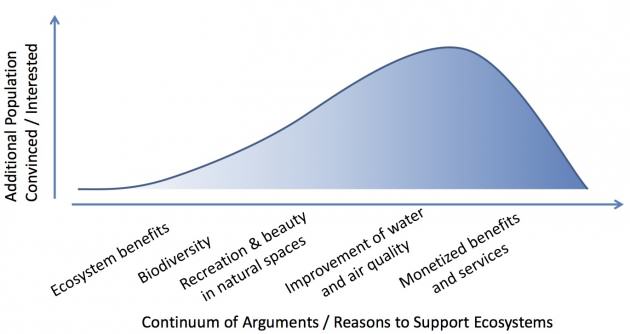 Who isn’t convinced? Many people, some of them local residents, and others who hold decision-making positions. In a climate of tighter budgets and more scrutiny of government spending, we need to do a better job of convincing the public and our political leaders that investing in natural systems is worth it, tipping the balance towards overwhelming public and political support.
Who isn’t convinced? Many people, some of them local residents, and others who hold decision-making positions. In a climate of tighter budgets and more scrutiny of government spending, we need to do a better job of convincing the public and our political leaders that investing in natural systems is worth it, tipping the balance towards overwhelming public and political support.
And one path to success is to convince people, regardless of political affiliation or interests, that green infrastructure is a better and less costly way of providing many services city dwellers need. To better accomplish this with a bigger audience, we need to assign dollar values to these services in a scientifically justifiable way. These types of efforts so far have been quite successful; ecosystem service valuation research performed by the Trust for Public Land in several states has shown that state investment in land conservation returns anywhere from $4 to $11 in natural goods and services per $1 invested. This work has persuaded legislatures and voters to fund state-wide conservation work. The more we can make this case, and specifically target urban areas where need and cost is greatest, the more we can strengthen the understanding and political support for green infrastructure. And that is much more impactful than convincing the small group of us that is already convinced.
About the Writer:
Thomas Elmqvist
Thomas Elmqvist is a professor in Natural Resource Management at Stockholm University and Theme Leader at the Stockholm Resilience Center. His research is on ecosystem services, land use change, natural disturbances and components of resilience including the role of social institutions.
Thomas Elmqvist
The difficult but important task of valuing urban nature:
Valuation of ecosystems and their services has developed rapidly as a way to avoid them being invisible in planning and development and prevent losses of assets important for the wellbeing of people. However, recently it has been clear that in the urban landscapes there are also numerous un-captured economic opportunities related to investments in urban green spaces, e.g. less costly and more sustainable solutions to address climate change challenges (compared to conventional engineering). Such opportunities also need robust tools of valuation. In various cities around the world (such as Amsterdam), initiatives have been taken where cash flows resulting directly from urban green space are being generated and captured in order to sustainably manage them. The underlying principle of these approaches (e.g., landscape auctions, crowd funding, private ownership of public parks) is to link the real economic benefits to the maintenance costs of urban green spaces in order to achieve sustainable management.
How do we value urban nature?
The total value of multiple services generated by ecosystems can be divided in different parts as illustrated in the figure below, depending on whether there is a market and whether the value can be expressed in monetary or only in non-monetary terms. Many tools for monetary valuation of ecosystem services are already available: direct market price, replacement cost, damage cost avoided, production function (value added), hedonic price (extra amount paid for higher environmental quality), travel cost (cost of visiting a site), and willingness-to-pay surveys.
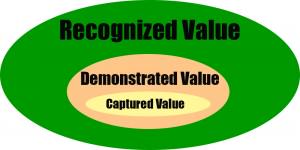
However, if we only describe the captured and demonstrated value, we would leave the recognized value invisible in decision-making processes and perhaps the bulk of values be lossed. Then, what are the non-monetary values and how could we go about to be better in making them visible?
In general, non-economic values of urban ecosystems could be summarized into the contribution by ecosystems to the formation of 1) place values, social cohesion, identity values, 2) educational and cognitive development, and 3) insurance value from increased social-ecological resilience.
1) Place values emerge from attachment to physical places as these come to be rendered meaningful by those who live or lived there. Several recent studies have shown that sense of place tend to be a major driver for environmental stewardship. Identity and sense of community, i.e., the feelings towards a group and strength of attachment to communities is often shaped by social processes that are attached to physical places and culturally valued species.
2) Urban ecosystems also provide multiple opportunities for cognitive development and educational benefits. Cognitive development associated to urban green areas would include the development and transmission of local ecological knowledge.
3) Finally, a critical type of non-economic benefit stems from the ‘insurance value’ that can be attributed to the contribution of urban ecosystems and biodiversity to maintain social-ecological resilience and security in cities and capacity to respond and adapt in the face of disturbance and change.
To summarize, urban ecosystem services are not market priced, and thus usually under-provided by market forces. To make the full range of values visible we need not only develop methods for non-monetary valuation but also a frame-work for how we produce an enriched picture of values, including monetary and non-monetary, through some form of multi-criteria analysis. Such a framework is urgently needed.
About the Writer:
Haripriya Gundimeda
Dr. Gundimeda is a Professor in the Department of Humanities and Social Sciences at the Indian Institute of Technology Bombay; and the President of URBIO. Her main interests are green accounting, mitigation aspects of climate change, energy demand and pricing, valuation of environmental resources, and issues relating to the development in India.
Haripriya Gundimeda
Yes, I believe that better information on the monetary value of ecosystem services is critical for getting cities adopt greener infrastructure solutions. The reason — most often, we take these things for granted and do not recognize the importance of ecosystems in providing the cost effective solutions. We cannot manage what we cannot measure and hence, not measuring the true contribution of ecosystem services leads to its mismanagement. The international project on “The economics of ecosystems and biodiversity” (TEEB) has provided several examples on how recognising the importance of ecosystem services helped in providing cost-effective solutions, analysing the trade-offs better and helped improve the decision making, thereby leading to conservation of the ecosystems.
For example, we recognize the fact that urban heat island — a phenomenon that occurs due to higher density of population, pollution and infrastructure — leads to increased consumption of energy and that green spaces can provide cost-effective solutions would lead to better green infrastructure solutions. Here, the expenditure saved due to increased energy tariffs from air-conditioning can be compared to the cost incurred in maintaining the green spaces in urban ecosystems. The role of green spaces in providing cost-effective solutions can thus be better understood with monetary valuation. The recognition that nature often provides cost effective solutions leads one to explore innovative alternatives like green rooftops and green spaces thereby reducing the temperatures in urban set up.
Similarly the role of mangroves in protecting the urban areas against storm surges can better be understood from what it costs to plant or maintain the mangroves intact as against constructing and maintaining an artificial dike. Mangroves can provide the same solution with almost one-fifth of the cost of an alternate man-made infrastructure (dykes). The value recognition can definitely help in including green spaces like mangroves in city planning.
What happens if wetlands are transferred to alternate land use like agriculture? The functions provided by the wetlands have to be performed by artificial structures. This can cost the governments higher than maintaining wetlands intact. Demonstration of these values led to conservation of wetlands in New York and Kampala.
When it comes to personal assets, we make rational and conscious decisions after carefully valuing all the alternatives Why cannot we do the same for urban planning and make cities better living spaces?
About the Writer:
Mike Houck
Mike Houck is a founding member of The Nature of Cities and is currently a TNOC board member. He is The Urban Naturalist for the Urban Greenspaces Institute (www.urbangreenspaces.org), on the board of The Intertwine Alliance and is a member of the City of Portland’s Planning and Sustainability Commission.
Mike Houck
I’d frame the question: How do we convince elected officials and policy makers to invest in both built and natural green infrastructure which then will retain or deliver ecosystem services, both monetary and non-monetary. Yes, of course we need to demonstrate the monetary value, both avoided and reduced costs, of using green infrastructure and better integrating grey and green infrastructure systems in our cities.
That said, a more fundamental challenge is convincing policy makers, natural resource managers, the philanthropic community, and sadly, some prominent conservation NGOs that urban natural resources, whether natural or built, have ecological value. Well-intentioned, progressive urban planners often argue there is “no room for nature in cities” because they eat up to much “buildable” land. For example, for those cities or regions with Urban Growth Boundaries (UGB), some argue that UGBs are to protect “nature out there” and that everything inside the UGB is to be urbanized. “Too much” green inside the UGB, they say, is antithetical to good urban design and growth management.
While that canard is on the wane, even some conservation groups contribute to an anti-urban by asserting that investing in urban natural resource protection, restoration, and management is contrary to the broader conservation agenda. This stance has been used at times as a rationale to propose raiding urban coffers to fund “real” conservation projects in “pristine” environments.
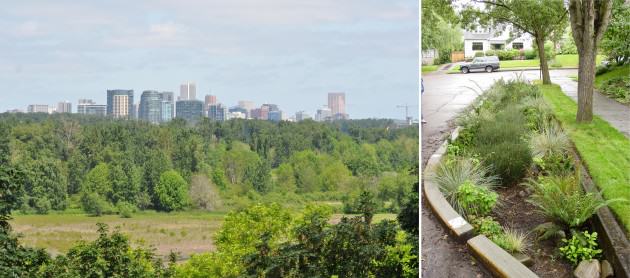
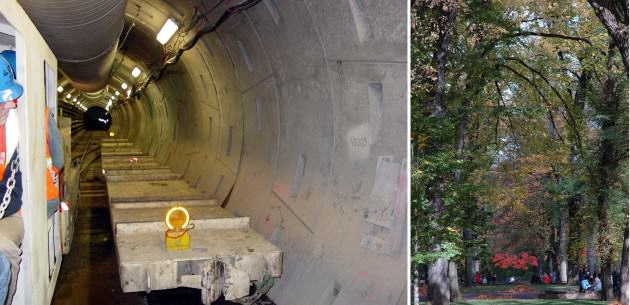
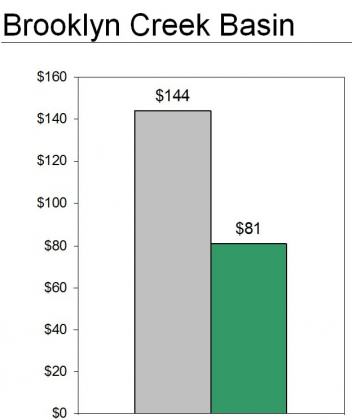
Green infrastructure practitioners and ecosystem services researchers and policy makers I work with say the following are the most significant knowledge gaps, although many feel we already have all the information we need to promote and implement green infrastructure projects. The biggest gap we face is more effectively educating policy makers and the public about the multiple benefits (monetary and non-monetary) of built and natural green infrastructure.
Gaps:
1) Knowledge of all benefits of complex green infrastructure projects (e.g., wetlands, floodplain, managing hydrograph). Need more information on multiple benefits of urban floodplains.
2) Proper geographic context in which we value ecosystem services. Generally, context is too small.
3) Inconsistency in how ecosystem services are measured and lack of common terminology.
4) Inability to capitalize green infrastructure so utilities can bond and use rates to fund projects. Need changes to national capital improvements and accounting standards.
6) Measuring cultural ecosystem services. How do people value green infrastructure, both built and natural and the ecosystem services they provide?
7) Social and quality of life and human health costs and benefits are typically not accounted for.
8) In an era where regulators are emphasizing incentives and non-regulatory, voluntary approaches, a lack of understanding of, or political will to enforce a strong regulatory hammer, without which green infrastructure programs won’t materialize.
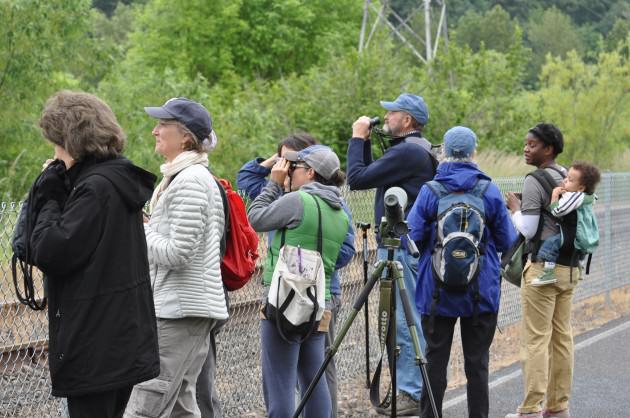
Patrick Lydon
The very fact that government and business leaders are attempting to work ‘nature’ into a balance sheet is good sign that there’s trouble afoot.
If we’re serious about presenting ecosystem services as integral to the city, I would argue that we should seek to establish nature’s place, not as a good infrastructure option and not as a positive economic impact factor, but as a service which is absolutely essential to the life of the city itself. Absent this ideology, nature becomes too easily shoehorned into the more convenient languages of economics and statistics, where it suffers the fate of being forever pushed around, outbid, and marginalized.
This past summer, when interviewing a particularly insightful natural farmer in Japan, I asked something to the effect of “why can’t we all just understand that the earth should be revered and appreciated?” His simple answer surprised me.
The farmer corrected my statement, saying “We understand already. Every time we stand in nature, every time we look up at the sky, or the tree, or the wheat plant, we feel joy in the simple moment, we smile for no apparent reason other than the fact that we are here on this earth…we understand, we just need a bit of help to cultivate this understanding.”
If our need is to cultivate a proper understanding of why nature and ecosystem services are important, any discussions of monetary value run contrary to this need. Yet how do we make our case, when speaking qualitatively about nature is something of a foreign language to most public and private sector decision makers?
I am reminded of a recent public art installation seen in Silicon Valley called A Floating World. The artwork spoke of urban ecosystem services in a more visceral way, and it gave the city a different language with which to see, hear, and understand the value of ecosystem services. Value, repackaged.
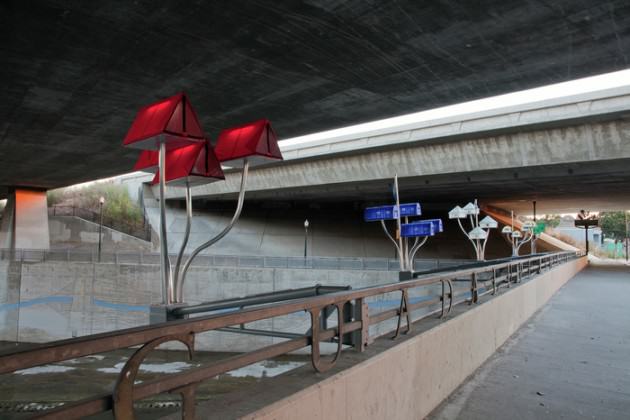
We can’t all be farmers, nor should we throw eco art everywhere, but what we can do quite easily is to help politicians and denizens alike regularly come into contact with nature in various ways as part of their job and life. Put people in a position where they can begin to understand the value of ecosystem services qualitatively instead of quantitatively.
Monthly experiences in nature? Council meetings at a city farm? There are myriad ways to discuss the importance of nature outside of economic terms and to begin building a true case for nature as an essential part of the city.
We just need to get creative about finding them.
About the Writer:
Rob McInnes
Rob McInnes is an independent wetland expert with particular knowledge of urban ecosystem services and their role in maintaining human well-being.
Rob McInnes
The spectre of industrialisation and technology continues to cast its shadow over human society, narrowing our natural horizons whilst expanding a virtual world. As human society has become increasingly urbanised and technology-obsessed the intrinsic bond between people and nature has slowly evaporated. Too often nature in cities is confined to postage stamp gardens, regimented parks or peri-urban nature conservation areas. Urban humans have become disconnected from nature. Nature is something that is “out there”, beyond the city, on the pages of the Sunday supplements, portrayed on jaw-dropping television documentaries, captured on amusing clips on YouTube, mumbled in the rambling memories of elderly relatives and trapped in the camera-phone snapshots of exotic holidays.
The disconnection between urban humans and the natural systems upon which they all depend has permeated the minds of politicians and decision-makers. Policy decisions too often fail to recognise the full value of urban nature. But this is not simply a failure of the economists. Wider society lacks the knowledge to understand the benefits that can flow from urban ecosystems. Sectoral governance structures perpetuate siloed thinking and compromise integrated decision-making. Even the nature conservation sector too often valiantly champions the threatened and the rare at the expense of extolling the wider benefits that nature provides human society. Consequently, biodiversity frequently becomes synonymous with the conservation of the iconic resulting in an undervaluing of the common and widespread species and habitats which underpin human well-being in the urban environment. It is no longer enough to consider urban biodiversity purely through the failing paradigm of protected species and habitats. Whilst not rejecting traditional nature conservation approaches, a parallel process must be developed where urban ecosystem services are more fully integrated into decision-making.
To achieve this will necessitate a hierarchical approach which does not simply fixate on the monetisation of these benefits. Simple methodologies need to be developed so that the full suite of benefits can be recognized as a precursor to integration within decision-making. These must be fit for purpose, designed for the appropriate audiences within city management structures and not another well-meaning, expensive but ultimately redundant output from an academic research platform. Once recognized, these benefits need to be qualitatively and quantitatively assessed and city managers need the relevant tools to achieve this. The objective should be to develop capacity within the people responsible for local decision-making to facilitate understanding of the full range of benefits and the scope of beneficiaries. Only once this process has been completed tools which facilitate monetisation of benefits should be applied.
The academic understanding to achieve this exists. The finances can be found. The tools and protocols can be developed. The solution is less to do with knowledge gaps or economics and more to do with capacity building and dissemination. Why wait for perfect knowledge if making well-informed decisions based on our current understanding would be an improvement? The key challenge is to provide information in the appropriate language to convince all stakeholders, from city mayors to individual citizens, of the importance and relevance of urban biodiversity and developing the relevant tools for the appropriate audience and with the necessary utility to recognise, capture and integrate into decision-making the benefits which nature provides human society in cities.
About the Writer:
Timon McPhearson
Dr. Timon McPhearson works with designers, planners, and local government to foster sustainable, resilient and just cities. He is Associate Professor of Urban Ecology and Director of the Urban Systems Lab at The New School and Research Fellow at the Cary Institute of Ecosystem Studies and Stockholm Resilience Centre.
Timon McPhearson
Cities around the world are beginning to realize that urban biodiversity and ecosystems are incredibly valuable for an expanding list of reasons. For example, cities like New York that need to find ways to deal with urban heat islands, troublesome stormwater, or extreme events are turning more and more to green infrastructure because it is both cost effective and can provide additional benefits. Though we know that ecosystems provide many types of services, we are only able to put monetary values on a few of them. This doesn’t mean that these services are the only valuable ones. We simply lack the necessary data to reveal the exact economic value of the larger set of ecosystem services that are being generated in urban ecosystems.
Experiences in many cities show that expressing benefits in monetary value motivates policy and green infrastructure investment. What we need, in addition to data, are robust mathematical models that take into account ecological, economic, social, and spatial data, which can be combined to calculate the value of multiple ecosystem services simultaneously, including provisioning, regulating, and cultural ecosystem services. To build such models will require developing indicators for aesthetic, sense of place, environmental education, and cognitive development benefits of urban green areas, in addition to improving our ability to capture real estate, tourism, mental and physical health, and insurance values connected to ecosystems. Urban planning and governance could benefit from the ability to examine development and planning scenarios in terms of trade-offs in delivery of ecosystem services. With potential decision-support tools like the mathematical modeling approach, we could demonstrate how alternative residential or urban park development plans affect the generation of future ecosystem services.
New economic valuation models also need to be spatially explicit so that planning and management can decide on how to create multi-functional ecosystems in places where they are needed most. Equity issues are paramount and we simply have to do a better job of creating green infrastructure solutions in low income, and minority communities. Understanding the spatial mismatches between where ecosystem services are most needed, whether for recreation, heat reduction, or noise pollution mitigation, and where they are currently provided is a critical first step for deciding future planning and development.
It also important to recognize that ecosystems services are influenced by human perceptions, values, and cultural traditions. There are probably few one-size fits-all solutions; rather, we need to work with neighborhoods and local stakeholders to find out the needs and priorities at the community level. In the meantime, we will need indicators for social need that can begin the process of identifying high need communities that should be prioritized for green infrastructure development. And since some aspects of ecosystems can also yield disservices, we need to get the science right to be sure we are in fact creating services, and not disservices. Ecological input to urban planning and management is important to achieve this.
Finally, not every important benefit of urban biodiversity and ecosystems can be captured in monetary terms. We need to advance non-monetary valuation at the same time, and work with our city leaders to understand how non-monetary valuation can be used in priority setting.
About the Writer:
Franco Montalto
Dr. Montalto, PE is a licensed civil/environmental engineer and hydrologist with 20 years of experience working in urban and urbanizing ecosystems as both a designer and researcher. His experience includes planning, design, implementation, and analysis of various natural area restoration and green infrastructure projects.
Franco Montalto
Decision makers (and individuals) always try to get the most out of their money. However, I believe that we could generate a lot more public support and associated investment in ecosystem services if they were better calibrated to the values, needs, and goals of diverse urban residents.
By modifying the configuration of urban spaces, we can change what happens there, i.e. we add and subtract functions to that particular urban space. A small but rapidly growing body of researchers from different disciplines (including yours truly) are working in lock step with practitioners to study these projects. I am confident that this work, though in its early stages, will ultimately produce robust empirical, statistical, or physical representations of these dynamic conditions, enabling us eventually to predict the various functions obtained from discreet modifications to urban space.
A related, and much more fundamental question, however, is why and how we modify urban spaces in the first place. Stated differently, given that there are an infinite number of ways that we can design/redesign/modify a space, be it a living room, a rooftop, or a wall, how do we settle on any one concept? Research here is less prevalent.
I believe that many green infrastructure advocates often mistakenly assume that a common set of values underlies such decisions, and expect that consensus regarding ecosystem service goals should follow. In my opinion, there is absolutely no reason to believe that such assumptions would be true. Anyone who grew up in a city remembers how differently you perceived the kids from your block compared to the kids on the next one. Even if you grew up in the suburbs, you remember how different the neighborhood on your side of the tracks was from the one on the other side. Our cities are dynamic networks of enclaves (voluntary clustering for example by ethnicity, lifestyle, or sexual orientation) and ghettos (default and/or imposed involuntary segregation of minority groups). In the US, zoning and other land use policies have also segmented our cities into commercial, residential and industrial areas, and physically separated high income from low income households on parcels of different sizes. We’ve got neighborhoods that are “where it is at”, neighborhoods that are “up and coming”, and neighborhoods that may- or may never- be; we’ve got contested, dangerous, sacred, and safe spaces; and both public and private land. The folks who live, work, and circulate through urban neighborhoods see different opportunities, face different challenges, have different goals, and, therefore, desire radically different things from the spaces around them. As any community planning meeting will demonstrate, most proposed changes to communities generate debate. If the transition to more enhanced urban ecosystem services is to be meaningful in scale and impact, it too will generate significant debate and discussion, and different strategies will emerge in different places.
I suppose that on a very basic level, it is safe to assume that we all want cleaner, healthier, more efficient cities, and broad typologies of ecosystem services (e.g. clean air, clean water, etc.) can be mapped to these goals. But in this usage, the ecosystem service concept is, to me, too general to be actionable and will therefore only generate lackluster support from the public. On the other hand, if the growing body of ecosystem service practitioners is willing to get down and dirty, more nuanced (and therefore more relevant = politically powerful) ecosystem service goals that address the real needs, goals, and aspirations of community residents can be developed. If you were a city council person, would you expect more phone calls from your constituents if you touted the need for cleaner water, or if instead you articulated your support to efforts that would create opportunities for gardening for local seniors; cut off the ability of thieves to access the backs of our houses; and eliminate persistent puddling in the streets after rainstorms?
The challenge is that as diverse as our communities are, is as diverse as these customized ecosystem service goals will be. It takes time and effort to inventory community needs, and the responsibility for doing so does not fall squarely on a water department, a public works department, or even on local politicians. Yet, by definition, ecosystem service goals need to be elicited directly from the public. They will be varied and responsive to the needs of different urban constituencies. They will vary from community to community, and from city to city. They will need to be adapted and changed over time, as communities change.
I am suggesting that instead of viewing ecosystem services as some new, noble, post-Brundtland, 21st century, game changing theoretical concept, let’s just think of this term as a name for our ever-improving multi-faceted abilities to map local to global, built to natural, and people to nature. If we can demonstrate the relevance of the concept in this way, very little convincing of the need for investment in ecosystem services will be required. It will be obvious.
About the Writer:
Steve Whitney
Steve Whitney is an urban planner serving as Program Officer, Ecosystem Services for the Seattle-based Bullitt Foundation.
Steve Whitney
The Environmental Protection Agency values a human life at $9.1 million U.S. dollars. To derive this number it applies some sort of sophisticated statistical analysis. In my cartoon fantasy, however, I see a room full of anatomic bean counters individually valuing the human body’s component parts. Once totaled, this approach could certainly produce an aggregate monetary value, but it would fail to account for the inherent value of the body as a system — a system about which we are still learning and upon which we are entirely dependent.
Attempts to monetize the value of ecosystem services often fall into this very same trap. The real strength of ecosystem service thinking in an urban environment is its ability to reveal the multiple benefits of green infrastructure investments, encourage interdisciplinary planning, foster collaborative governance, and illuminate systemic costs and benefits. In contrast, most efforts to monetize ecosystem services employ an opposite, fragmented approach where ecosystem components and associated benefit flows are disaggregated and considered separately. Unfortunately, even if all of the individual categories of benefit could be accurately valued, and they cannot, the sum total would not reflect the true composite value of the living systems upon which we are also entirely dependent.
There are other limitations as well. Original research to determine ecosystem values can be expensive and time intensive, transferring benefit values from elsewhere can be imprecise, and valuation techniques derived from the field of ecological economics can be difficult to describe and defend in a policy development context.
So, despite these significant limitations, why might information on the monetary value of ecosystem services be critical for cities seeking to accelerate the use of natural green infrastructure?
First, monetary values are required whenever a reciprocal agreement is negotiated whereby one party agrees to pay another party for the generation of a particular ecosystem service. Such transactions, typically among municipal utilities and nearby landowners, are becoming increasingly common as an alternative pathway for cities to meet regulatory obligations, or to incentivize private developers to meet additional green infrastructure targets.
Monetary values also are needed when a unit of government seeks to comprehensively account for its capital assets. In the United States, established accounting rules allow consideration of built capital only, while natural capital assets are kept completely off the books. This makes it difficult for a municipality to secure needed public financing for green infrastructure investments. Some municipalities are beginning to push back, with efforts now underway to convince the Governmental Accounting Standards Board to allow accounting for natural capital assets.
I believe natural green infrastructure is the very foundation on which urban sustainability is based. If a dollar sign can help reveal the true costs and benefits of urban planning and development decisions, then we should monetize. But as we do, we must always remember that no matter what monetary values the environmental bean counters might conjure up, we can be absolutely certain they will be low.

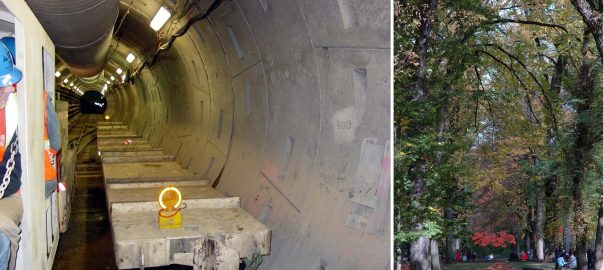






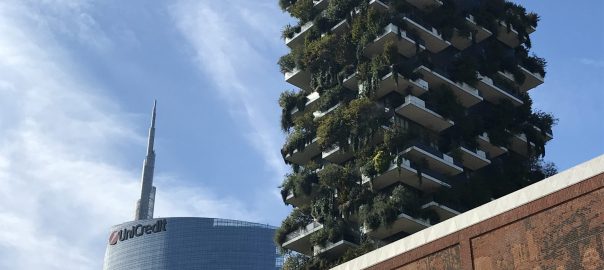

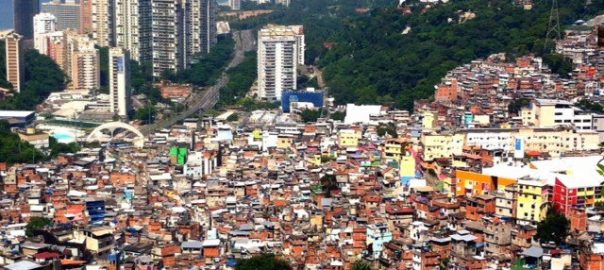
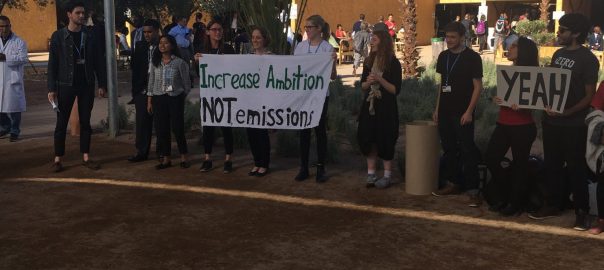
Add a Comment
Join our conversation